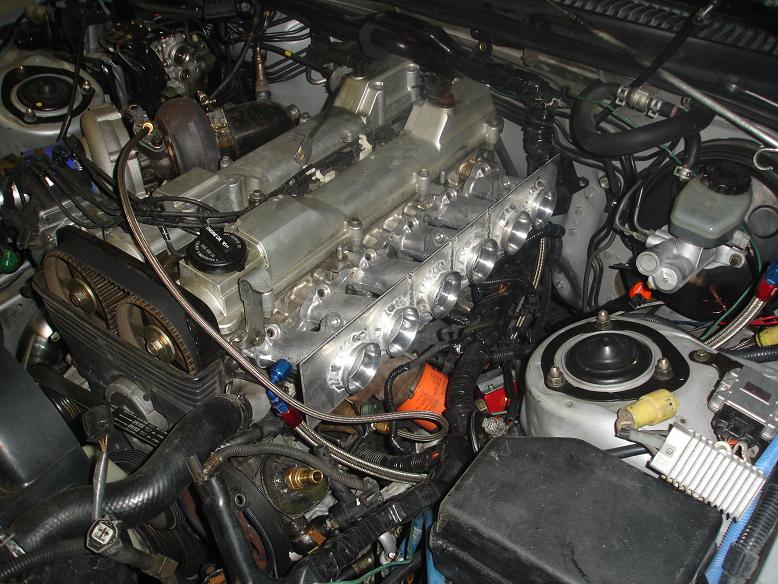Positive pressure? It is ALWAYS under positive pressure, unless a backfire. Air acts the same under boost as it does under vacuum. Under boost just is a higher depression. I certain cross section area(CSA) will have a determined coeffiecient discharge(CD). By having a velocity stack, or just a nice radius port, will increased the CD of the same CSA, effectivly making the intake runner seem like it is larger.
I actually have my own flow bench, and from that I have tested velocity stacks, and I gained 20cfm over the sock manifold at 28" of water. Without the velocity stacks, I lost 20cfm over the stock manifold. So the velocity stack in turn increased 40cfm than just the runner alone, which was about 20% more air making it to the head. Yes it was only at 28" of water, but at 553" of water, or 20psi, the CD remains the same, only static air pressure changes.
Some people flow at 10" some at 25" some at 28" and some at much greater pressures. There is a calculation you can use to convert your flow numbers to each depression. Air moves from a great pressure to a lesser pressure. Some people believe that to test forced induction on a flow bench, you must BLOW through the port. That is incorrect. By sucking through you are creating higher pressures on the outside of the port than on the inside, which in effect is the exact same thing that goes on in forced induction. The only thing that will change at different depressions is turbulence. You may find out there are certain anomalies that happen at different pressures that didn't exist before. This is really the only reason why you would even test at higher pressures. In Theory, the different pressures would still be linear in comparison.

